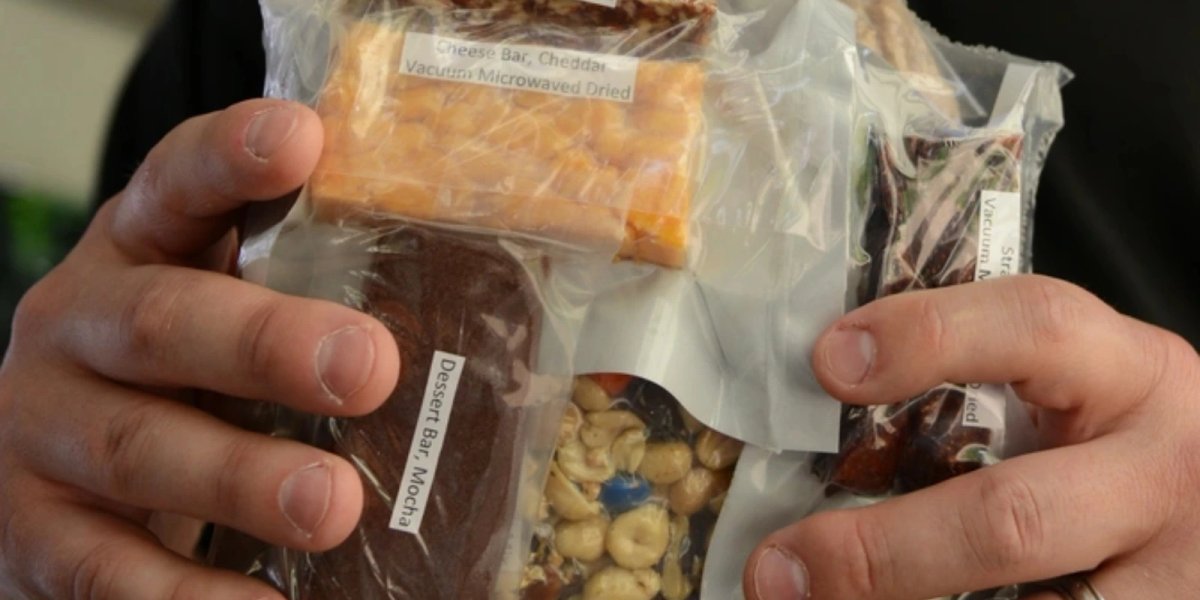Good news for all GI Gourmets and Frontline Foodies: there are some new meals headed to troops in the field for you to taste! Last week, the Army announced the availability of the new Close Combat Assault Ration (CCAR), which they describe as a “lightweight, energy packed, nutrient-dense, individual field ration.”
Developed over the last six years by the Combat Capabilities Development Command (DEVCOM) Soldier Center’s Department of Defense Combat Feeding Division (CFD), these rations are designed to pack as many calories and nutrients as possible into the tiniest package available.
What Is a CCAR?
A CCAR is a compact, eat-on-the-move assault ration that is designed for short durations of high intensity combat operations.
Designed to meet the needs of small units expected to operate in the field for a week or more without resupply, each CCAR crams 2,800 calories into packet 39% smaller and 17% lighter than a First Strike Ration (FSR), a more compact version of the standard Meal, Ready to Eat (MRE).
The contents of the CCAR are designed to provide enough food for an entire day, and is 2800 kilocalories.
The CFD, working with Tufts University (and using troops from the 10th Special Forces Group at Fort Carson, the 10th Mountain Division in Fort Drum, and the Marines’ 2nd Reconnaissance Battalion out of Camp Lejeune), tested two innovative methods of condensing various foodstuffs.
The first, vacuum microwave drying uses the combined methods of, as you may well guess, vacuuming and microwaving to shrink food items.
The second was sonic which uses sound waves on food as its compressed allowing it to condense without the need for a binding agent of some sort. That is some seriously hi-tech food science and likely will have a major influence on the future of military meals. Here’s a quick look at the history of pre-packed rations, in light of the most recent evolution.
The Early History of Military Rations
The old adage “An army marches on its stomach” has been attributed to several historic military leaders (most frequently Napoleon), but whatever its origins its accuracy is certainly not up for debate. Any and every armed force in human history needs sustenance to move, train, and fight. And the history of pre-prepared food designed to last soldiers and sailors through weeks and months or at sea goes back thousands of years.
Mariners of ancient Egypt ate simple, long-lasting biscuits called dhourra as they traversed the Nile and Mediterranean. Roman legions dined on similar snacks called buccellum.
And in the 1660’s Britain’s Royal Navy began mass producing simple crackers of salt, water, and wheat flour. These vitamin-rich, durable victuals the sailors, soldiers, and Marines who consumed them over the years dubbed them “sea biscuits,” “ship’s biscuit,” “molar breakers,” and, perhaps most (in)famously, “hardtack.”
These tough, durable bits of grub became staples of many armies and navies, including America’s for the next few centuries.
Pre-Packaged Military Meals
The first individually packed rations that weren’t just molar-breaking biscuits issued to US troops dates back to 1907. Dubbed “Iron Rations,” the meals included beef bouillon, cooked wheat, a chocolate bar, and portions of salt and pepper.
In 1917, so-called Reserve Rations replaced the iron ones.
In 1938, canned meals (dubbed C-Ration) debuted followed in 1942 by the lighter K-Ration. These both included enough food to cover multiple meals and, of course, that most vital component of a healthy meal by 1940s standards: cigarettes.
In 1958 the “Meal, Combat Individual” (MCI), which weren’t all too different from the old C-Rations, became the standard US military field ration.
After several years of development in the mid-to-late 1980s, the military issued their first MRE’s in 1981.
In the decades since then, the DoD has continued to improve, adapt, and add new menu items to the MRE’s eaten by troops in the field.
And in 2007, the first FSR’s, an even more compact version of the MRE, became available to troops in the field and on the front lines of the War on Terror.
The CCAR and the Future of Military Meals
While the Close Combat Assault Ration won’t replace those bulky MRE’s among units on shorter operations or capable of relatively easy resupply, the CCAR’s will probably prove popular among units happy to lighten their packs without lessening the chow they can carry.
As of now, they’re available for procurement by all branches of the military via the Defense Logistics Agency Troop Support and they come in three varieties. And if any of you find yourselves preparing to chow down on one of them as you read this, let us say (as Napoleon also probably said at least once) bon appétit!
Suggested reads:




